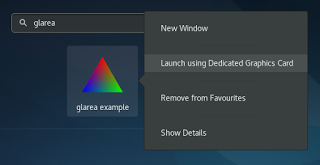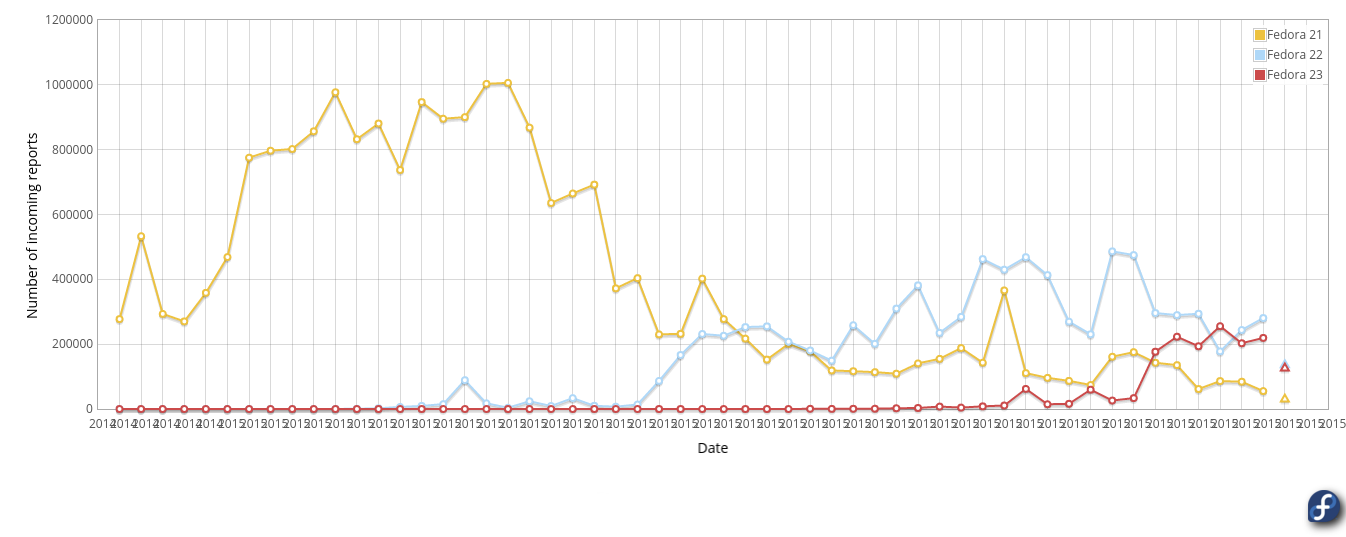I started writing this blog entry at the end of January, but kept delaying publishing it due to waiting for some cool updates we are working on. But I decided today that instead of keep pushing the 2016 review part back I should just do this as two separate blog entries. So here is my Fedora Workstation 2016 Summary :)
We did two major releases of Fedora Workstation, namely 24 and 25 each taking is steps closer to realising our vision for the future of the Linux Desktop. I am really happy that we finally managed to default to Wayland in Fedora Workstation 25. As Jonathan Corbet of LWN so well put it: “That said, it’s worth pointing out that the move to Wayland is a huge transition; we are moving away from a display manager that has been in place since before Linus Torvalds got his first computer”.
Successfully replacing the X11 system that has been used since 1987 is no small feat and we have to remember many tried over the years and failed. So a big Thank You to Kristian Høgsberg for his incredible work getting Wayland off the ground and build consensus around it from the community. I am always full of admiration for those who manage to create these kind of efforts up from their first line of code to a place where a vibrant and dynamic community can form around them.
And while we for sure have some issues left to resolve I think the launch of Wayland in Fedora Workstation 25 was so strong that we managed to keep and accelerate the momentum needed to leave the orbit of X11 and have it truly take on a life of its own.
Because we have succeeded not just in forming a community around Wayland, but with getting the existing linux graphics driver community to partake in the move, we managed to get the major desktop toolkits to partake in the move and I believe we have managed to get the community at large to partake in the move. And we needed all of those 3 to join us for this transition to have a chance to succeed with it. If this had only been about us at Red Hat and in the Fedora community who cared and contributed it would have gone nowhere, but this was truly one of those efforts that pulled together almost everyone in the wider linux community, and showcased what is possible when such a wide coalition of people get together. So while for instance we don’t ship an Enlightenment spin of Fedora (interested parties would be encouraged to do so though) we did value and appreciate the work they where doing around Wayland, simply because the bigger the community the more development and bug fixing you will see on the shared infrastructure.
A part of the Wayland effort was the new input library Peter Hutterer put out called libinput. That library allowed us to clean up our input stack and also share the input code between X and Wayland. A lot of credit to Peter and Benjamin Tissoires for their work here as the transition like the later Wayland transition succeeded without causing a huge amount of pain for our users.
And this is also our approach for Flatpak which for us forms a crucial tandem with Wayland and the future of the Linux desktop. To ensure the project is managed in a way that is open and transparent to all and allows for different groups to adapt it to their specific usecases. And so far it is looking good, with early adoption and trials from the IVI community, traditional Linux distributions, device makers like Endless and platforms such as Steam. Each of these using the technologies or looking to use them in slightly different ways, but still all collaborating on pushing the shared technologies forward.
We managed to make some good steps forward in our effort to drain the swamp of Desktop Linux land (only unfortunate thing here is a certain Trump deciding to cybersquat on the ‘drain the swamp’ mantra) with adding H264 and mp3 support to Fedora Workstation. And while the H264 support still needs some work to support more profiles (which we unfortunately did not get to in 2016) we have other codec related work underway which I think will help move the needle on this being a big issue even further. The work needed on OpenH264 is not forgotten, but Wim Taymans ended up doing a lot more multimedia plumbing work for our container based future than originally planned. I am looking forward to share more details of where his work is going these days though as it could bring another group of makers into the world of mainstream desktop Linux when its ready.
Another piece of swamp draining that happened was around the Linux Firmware Service, which went from strength to strength in 2016. We had new vendors sign up throughout the year and while not all of those efforts are public I do expect that by the end of 2017 we will have most major hardware vendors offering firmware through the service. And not only system firmware updates but things like Logitech mice and keyboards will also be available.
Of course the firmware update service also has a client part and GNOME Software truly became a powerhouse for driving change during 2016, being the catalyst not only for the firmware update service, but also for linux applications providing good metadata in a standardized manner. The Appstream format required by GNOME Software has become the de-facto standard. And speaking of GNOME Software the distribution upgrade functionality we added in Fedora 24 and improved in Fedora 25 has become pretty flawless. Always possible to improve of course, but the biggest problem I heard of was due to versioning issue due to us pushing the mp3 decoding support for Fedora in at the very last minute and thus not giving 3rd party repositories a reasonable chance to update their packaging to account for it. Lesson learnt for going forward :)
These are just of course a small subset of the things we accomplished in 2016, but I was really happy to see the great reception we had to Fedora 25 last year, with a lot of major new sites giving it stellar reviews and also making it their distribution of the year. The growth curves in terms of adoption we are seeing for Fedora Workstation is a great encouragement for the team and helps is validate that we are on the right track with setting our development priorities. My hope for 2017 is that even more of you will decide to join our effort and switch to Fedora and 2017 will be the year of Fedora Workstation! On that note the very positive reception to the Fedora Media Writer that we introduced as the default download for Fedora Workstation 25 was great to see. Being able to have one simple tool to use regardless of which operating system you come to us from simplifies so much in terms of both communication on our end and lowering the threshold of adoption on the end user side.



